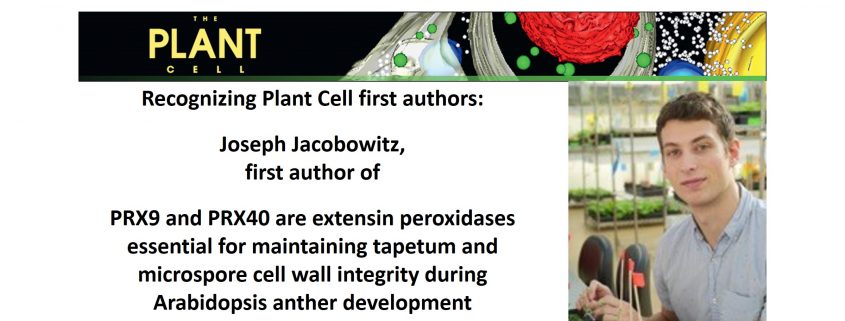Recognizing Plant Cell first authors: Joseph Jacobowitz
Joseph Jacobowitz, first author of PRX9 and PRX40 are extensin peroxidases essential for maintaining tapetum and microspore cell wall integrity during Arabidopsis anther development
Current Position: PhD Student, Massachusetts Institute of Technology Department of Biology/Whitehead Institute for Biomedical Research, Cambridge, MA, United States
Education: B.S./M.S. in Biochemistry, Brandeis University
Non-scientific Interests: Swimming, board games, Brazilian Jiu Jitsu
Brief bio: I completed my B.S./M.S. in biochemistry at Brandeis University in 2014. While at Brandeis, I worked in the lab of Douglas Theobald and studied an apicomplexan enzyme – the Plasmodium falciparum Lactate Dehydrogenase. After Brandeis, I continued my research of enzymes by moving to Cambridge and joining the lab of Jing-Ke Weng at MIT. Unlike my undergraduate work, which was focused on enzymes in vitro, my PhD work has expanded to examine enzymes in vivo as well. In particular, I have been studying the functions of various enzymes on the plant cell wall. Here, I employed a reverse genetic approach to identify two peroxidases that are functionally redundant and critical for Arabidopsis anther and pollen development. These peroxidases reinforce the tapetal cell walls, thereby preventing the cells from swelling uncontrollably. Throughout this study, it has been fascinating for me to see how enzymes can affect more than just metabolism – they can have extremely important and specific roles in plant development, form, and function as well.




